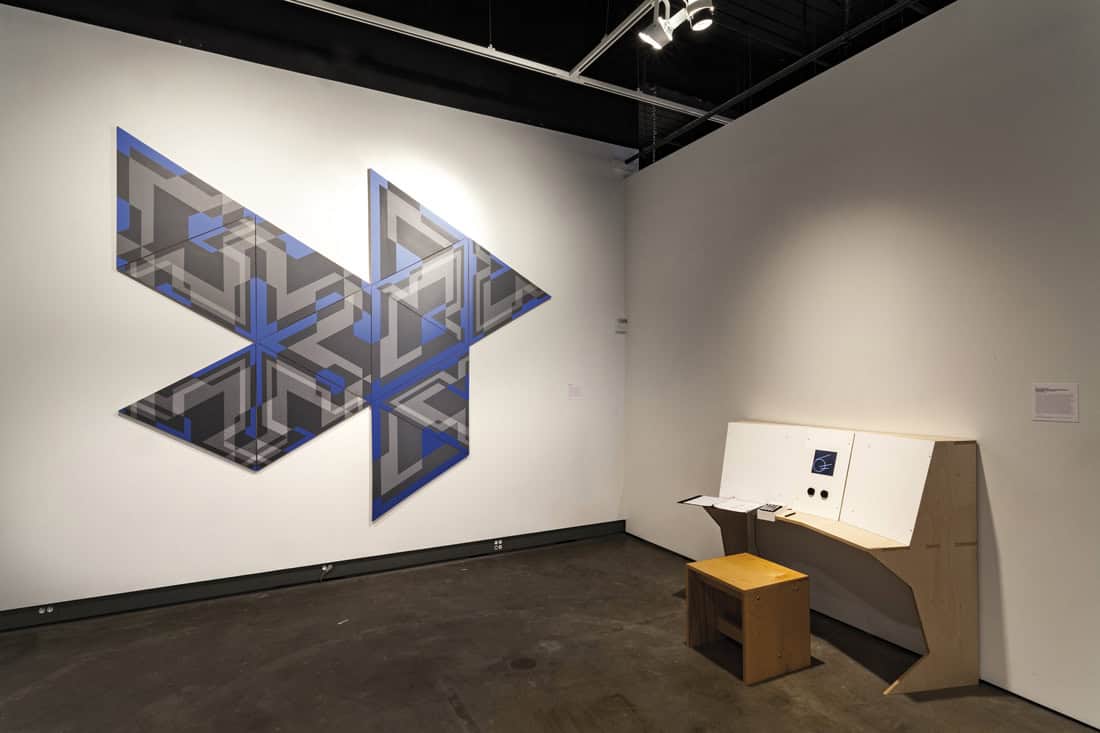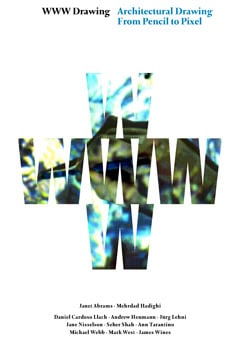Since architects began to flirt with computers in the 1960s, debates about the role of computation in architecture have often been framed antagonistically – as arenas for technophobes and technophiles to clash, each staking a claim on the unique value, or promise, of their respective practices. This dichotomy is tempting. On the one hand, images of automated design systems – offering creative freedom, managerial efficiency, or ‘personalized’ design solutions – abound in architecture’s six-decades romance with computation. Seductive and often reductive, these images outlined the contours of a computationally augmented practice of architecture, and captured the imagination of many architects in academia and industry, effectively ushering an entire academic sub-field.
Fig. 1: A reconstruction of Ivan Sutherland’s 1964 “Sketchpad” system, the first interactive graphics system, sits alongside Blooms Day, a 1969 generative painting by George Stiny, in Designing the Computational Image, Imagining Computational Design, an exhibition curated by Daniel Cardoso Llach in 2017 at the Miller Gallery, Pittsburgh.
Computers were greeted more cautiously, on the other hand, by those architects who saw them either as means of producing ineffective simulacra, or as a dangerously transformative force in architecture. For some in this group, computer screens simply failed to approximate the plasticity of sketches drawn by hand, or the tactility of a physical model; for others – aware of the social and organizational tensions introduced by technologies – computers conjured (not entirely unjustified) pre-industrial fears of automation, de-skilling and alienation.
A sort of bargain was thus struck across these seemingly distant intellectual territories: the idea that the computer is ‘just another tool’ that architects can utilize in their design process – another paintbrush or easel in the architect’s atelier. Frequently deployed in studio reviews, ‘think pieces’ and course syllabi, this concept has become part of many architects’ conventional wisdom, configuring a comfortable middle ground where computational ideas and techniques can co-exist with (albeit at a safe distance from) architecture’s hard core.
Full content is available only for registered users. Please login or Register

